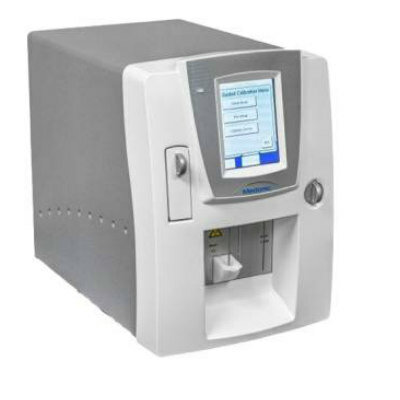Different Methods Compared for Diagnosis of Clostridium difficile Infection
By LabMedica International staff writers
Posted on 09 Aug 2011
Four diverse methods were evaluated for the detection of Clostridium difficile in stool specimens collected in liquid transport medium. Posted on 09 Aug 2011
The methods for detection included an enzyme immunoassay for the antigen glutamate dehydrogenase (GDH), a toxin A and B enzyme immunoassay (Toxin EIA), cell culture cytotoxicity neutralization assay (CT) and a real time polymerase chain reaction (PCR) assay.
Scientists from the University of Michigan Health System (Ann Arbor, MI, USA) analyzed a total of 357 stool specimens collected in Cary-Blair transport media (Meridian Diagnostics, Cincinnati, OH, USA). The goal of their study was to establish an analytically accurate and efficient algorithm for the detection of C. difficile infection (CDI) in a patient population using samples collected in a specific transport medium and to determine whether the sensitivity and specificity of PCR was affected by freezing samples before testing.
The analytic sensitivity and specificity of each as determined using a combined gold standard were as follows: for the Wampole C. DIFF CHEK-60 Assay, GDH (Inverness Medical; Princeton, NJ, USA) were 100% and 93.2%, respectively; for the C. difficile Toxin A/B Microplate Assay, Toxin EIA (Remel; Lenexa, KS, USA) were only 82.9% for both. The cell culture cytotoxicity neutralization assay (TrinityBioTech; Carlsbad, CA; USA) achieved 100% sensitivity and specificity, while for the PCR that was performed on frozen specimens, they were 74.3% and 96.6%, respectively. However, the sensitivity and specificity of the GeneOhm Cdiff PCR Assay improved to 100%, when performed on 50 fresh stool samples collected in Cary-Blair media. This molecular assay is a product of Becton, Dickinson and Company (Franklin Lakes, NJ, USA).
Clostridium difficile infection (CDI) caused by toxigenic strains of C. difficile is primarily a nosocomial infection with increasing prevalence. The authors concluded that while CT remains a sensitive method for the detection of CDI, GDH offers an excellent initial screening method to rule out CDI. The authors concluded that while the performance of each assay did not appear to be affected by collection in Cary-Blair medium, the PCR method performed better using fresh specimens. While PCR on all stool specimens currently carries a high cost per test, this method may offer a more rapid alternative to CT for the confirmation GDH-positive samples. The study was published in July 2011 in the online journal Infectious Disease Reports.
Related Links:
University of Michigan Health System
Meridian Diagnostics












